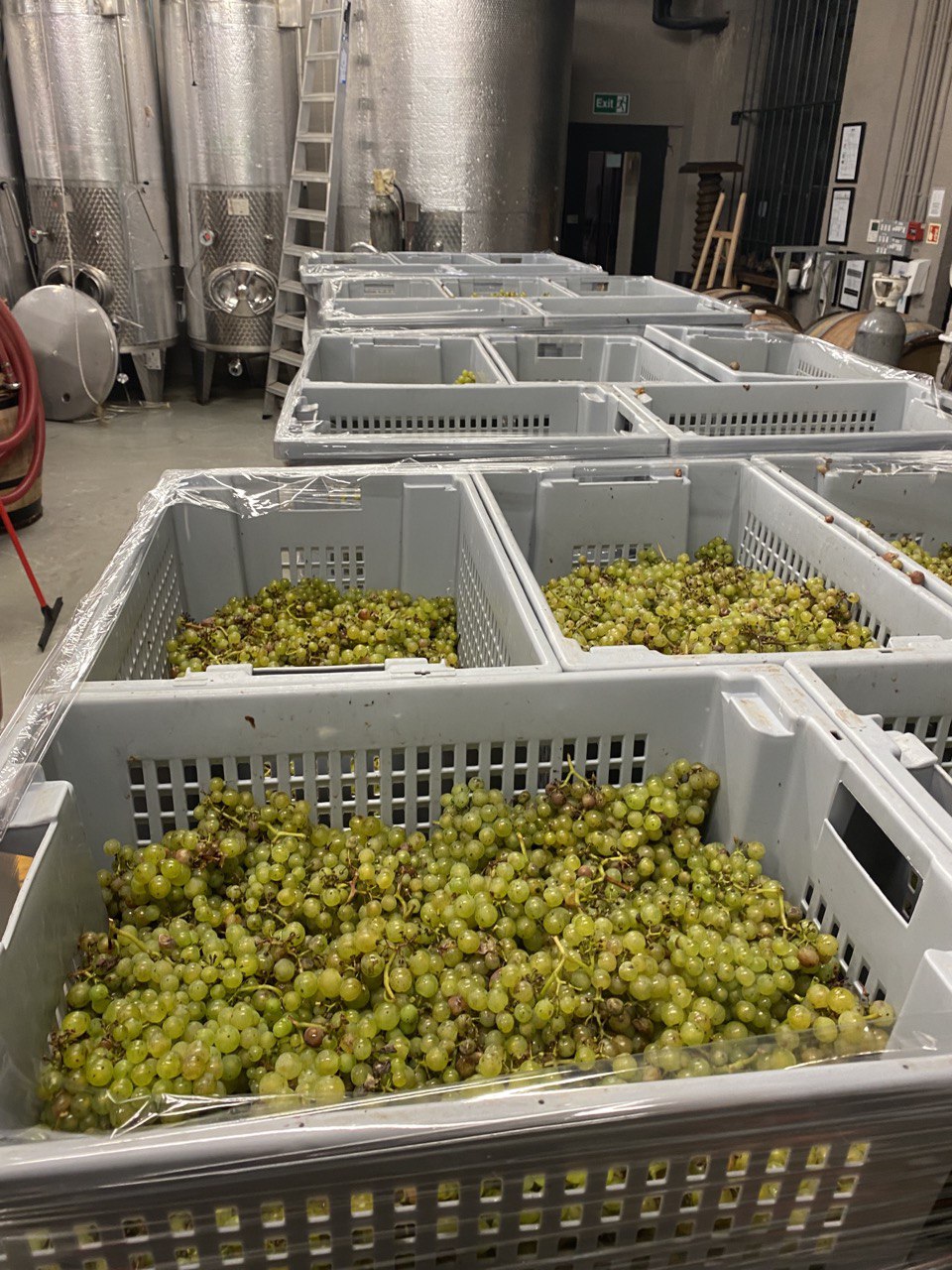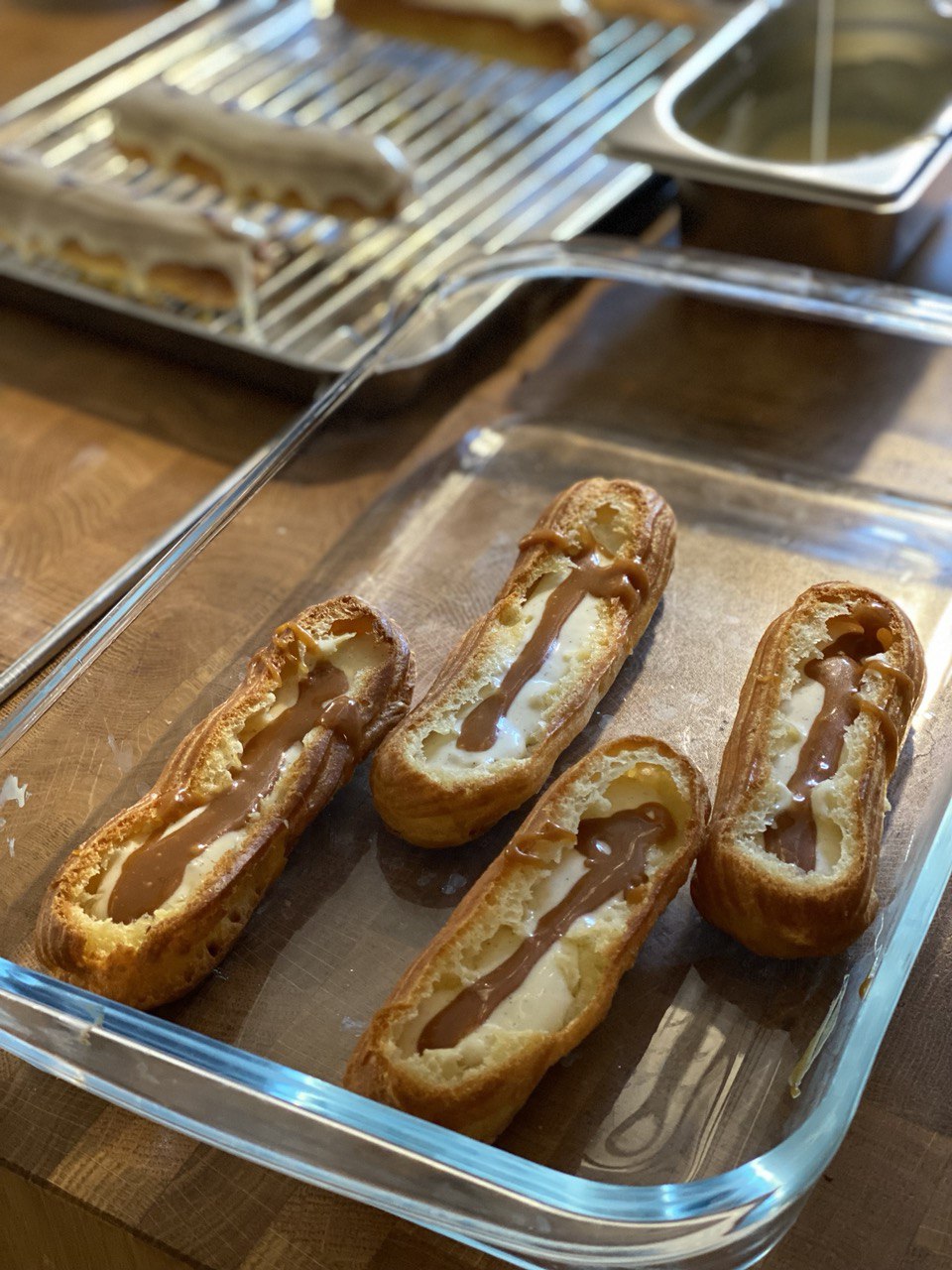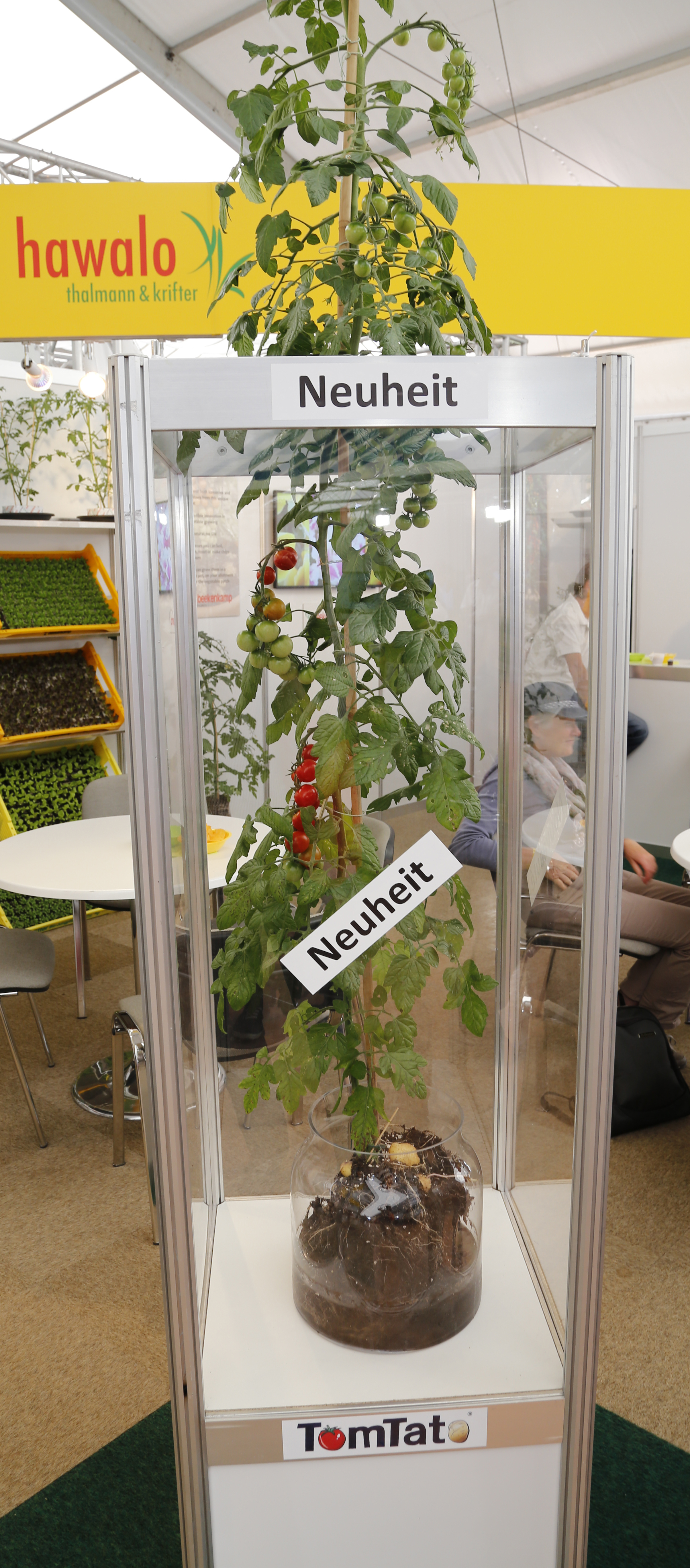TUESDAY TRIAGE #65
by Vadim Drobinin ¶
Your weekly crème de la crème of the Internet is here!
12.10.2021 (read in browser)
-
Intro
Whatever is on my mind this week. -
Things I enjoyed reading
Ten-ish articles I found worth reading. -
Things I didn't know last Tuesday
Ten-ish facts I didn't know when I wrote the previous edition. -
Book of the week
Some thoughts on the latest book I've read.
On making wine ¶
Last week I ranted a lot about natural wine.
This week I got my hands dirty and helped making around 1000 (one thousand) litres of still white wine (namely Bacchus, which is one of my favourite grapes).

The freshly pressed juice is abosultely delicious and already has lots of very recognizable notes from the wine it will be turned into.

The process is far from finishing, as the juice is only pressed and put into tanks to strain and ferment, but I will keep you posted on its development as I will be back to the winery quite a few more times to check up on it and also help out with a few other varieties of grapes (Chardonnay, anyone?).
In the meantime, you can't really make wine without sampling way more wine.

We also got back to eclairs. The previous ones were delicious but not up to my standards, so another few dozens were baked.
This time the shells were much better:

Half of them got filled with double vanilla cream and caramel sauce:

The other half got injected with Earl Grey cream and glazed with white chocolate mirror glaze.

They were garnished with tiny flowers, while the former got think free standing creme brulees on top, blowtorched before serving.

Definitely worth the efforts:

Things I enjoyed reading ¶
1. What’s the Point of 15-Minute Grocery Delivery? by @a_w_gordon ¶
Here is a curious discussion about the business model of grocery deliveries being no different from those of classic offline stores.
The company's entire business model depends on those algorithms working psychological magic. Grocery stores make money by selling you not just the things on your shopping list but all the things that aren't on your list—that bag of chocolate chip cookies you can’t resist, or that ready-to-eat rotisserie chicken that sure would make an easier dinner than the recipe you had planned. Grocery stores already have an efficient way of presenting these items to prospective buyers: shelves. That's why the milk is in the back of the store. Companies like Jokr need to be no different, a taller task in app form, because apps don't have shelves, so they need algorithms.
I've used those a few times, and most of my groceries come from Amazon Fresh and other online shops, but being able to spot a missing ingredient and get it delivered within 20 minutes while cooking something else is pretty sick.
I will definitely do that again.
2. Thoughts on chess improvement, after gaining 600 points in 6 months (1200-1800) by @MarcusBuffett ¶
The last time I mentioned chess, I got distracted by an article where a human trained a computer to play chess good enough.
Here is another one: where a human trained themselves to climb up an international score table by quite a lot.
I got back into chess this most recent time, by picking up this book. The idea is you do a set of puzzles, let’s say 300. Then you do the same set in half the time, then half again, etc. 7 sets is the standard, the last set you’re supposed to be able to complete all the tactics in a day. This sounded like a novel approach, so I did a few sets of the ~300 beginner problems. By the third set, I felt like I was just remembering the exact positions. Plus I didn’t love some of the puzzles, so I’d get stuck on one then get frustrated when the answer was one of those “and then white has a crushing position”, which is totally useless for a beginner who can’t identify when a position is “crushing”.
I probably don't have enough patiens anymore to go through hundreds of puzzles, but would absolutely love it back in my childhood, where I had to do them by the book instead, and never enjoyed carefully copying positions from a picture just to find out twenty minutes later that a pawn got missed.
3. A Modest Apology for the Man in the Bottle (1749) by @PublicDomainRev ¶
Would a person fit into a quart bottle? Doubtly so, but then three centuries ago there wasn't much entertainment going on either, so lots of people paid for entrance just to find out that was a bet aimed at researching how naive people are.
One thing is certain: the crowd rioted, tearing up benches, destroying the sets and scenery, and dragging whatever possible out onto London’s streets, staging a bonfire, with the theater’s curtain hoisted as a kind of victory flag. The event was not without humor: tricked by his own social class, the Duke of Cumberland (son to the King) was particularly enraged and drew his saber, intending to charge the bottle, only to be quickly disarmed. Quoting a letter sent by “a Scotch Jacobite lady”, Timbs ribs the Duke: “Fools should not have chopping-sticks”.
However the article takes the plot way further and ends up with an unusual twist and another piece of historical literature. I won't spoil that.
4. And You Will Know Us by the Company We Keep by @eugenewei ¶
An essay about social networks, existing and upcoming, which I find quite amusing after working with social networks for quite a long time.
This is the classic social media chicken-and-egg cold start problem. Every Silicon Valley PM has likely heard the stories about how Twitter and Facebook's critical keystone metrics were similar: get a user to follow some minimum number of accounts. Achieve that and those users turn into WAUs, or even better, DAUs. Users failing to follow enough accounts were the most likely to churn. Many legendary growth teams built their entire reputations inducing tens or hundreds of millions users to follow as many other users as possible.
I especially like how the author highlights the impulse to judge, which to me sounds like the main way many use social media.
5. Why MasterClass Isn’t Really About Mastery by Adam Keesling ¶
I never thought of MasterClass from this perspective: not as a platform to master something, but as a source of inspiration. So think Pinterest, but with more context.
But the spark that ignited it all — the whole reason that the kid puts in the hard work and asks his parents to go to a basketball camp — came from admiring the best of the best.
Masterclass is selling the LeBron James poster we put on our bedroom wall, not the skills coach we hire to train us three times a week. And they’ve learned that adults aren’t so much different from our 11-year-old selves: we love to be inspired by the greatest humans on this planet.
I wonder if that makes it effective anyway? There were a few masterclasses I got inspired by, and they were definitely worth their price.
6. How to Evaluate Startup Offers - A Beginner's Guide by @avyfain ¶
Wish something like that found me eariler rather than later.
I didn't make a fortune out of startups I've worked for in the past, which obviously doesn't do judgement to my abilities to evaluate startup offers, but who knows what could be in the future?
For shareholders, the fundraise is usually good news. However, they now own a smaller piece of a larger pie. When your percentage of ownership is decreased via the issuance of new shares you’re experiencing dilution. If you were the lucky holder of 100,000 shares, you used to own 1% of the company. After this round, you only own 0.83%, and future rounds of funding will further dilute your shares.
And yes, the dilution is the sneakiest unpredictable thing that is there to happen.
7. The Philosophy of Fly-Fishing by John Knight ¶
Might be one of the oddest books reviews I've ever read, but comparing to its topic it is not that bad. I will try to source it myself, but by the looks of it, a good writer can turn even a book on fishing into a slice of history and time, and touch a bunch of complex ideas from philosophy to poetry.
What the hell was this book? I put it aside and kept fishing. But a few years later, while I was on a river in Idaho at dusk and found myself in the middle of a tremendous caddis-fly hatch, an answer occurred to me. Caddis flies, like many aquatic insects, pupate in little husks attached to rocks in rivers. At the right moment in the summer, they emerge as flies, swim to the surface and take off, but not before pausing to dry their wings. They do this by the thousands and, as Walton puts it, they make the trout “bold and lusty.”
My own encounter with fishing was pretty limited so far (altough already more successful than the author's) – that book might push me even closer to perfection.
8. Engineers should not design streets by @AndrewAPrice ¶
I could mention it purely for the title but the whole post is worth reading.
A product can be an absolute flop with users, but there might have been many difficult technical challenges that were overcame by the engineers to build it, that the product manager receives a bad performance review while the engineers gets promoted, or vice versa if the product was a success but trivial to build.
Now we understand that each role has their own strengths (a jack of all trades is a master of none) and also their own value system. Everyone wants the product to be successful, but the top priority for the UX designer is likely to build beautiful things, and for the software engineer it is likely to solve technical problems.
This is indeed one of the biggest issues of the industry. Different members of the team have different motivation and metrics to succeed. Many companies avoid holding people accountable, and share responsibilities within the whole team, which makes recognizing one's acievements even harder.
So it is quite odd to expect from an engineer a solid and regular QA, or from a UI designer – a thought-through colour scheme conversion flow.
9. 3D Printing sex toys: a quick, easy and safe method by @billierubenmake ¶
A genius way to make safe sex toys with a 3D printer. I am more interested in making food-grade molds (think silicone molds for frozen desserts), but that's pretty much the same technique, and while I already have bees wax (handy for infusions) and a vacuum chamber (handy for other infusions!), it looks like the right time to get a 3D printer.
You will want to cut your toy out of a larger shape like a cylinder, cut that cylinder into half (so you have two sides), then add registration nobs. These are used to help align the mould. I used little pyramids with their tops chopped off and rotated to stick out of and into the sides of the mould where the mould halves meet. Remember when making these that you need to add clearance between fitted parts. Meaning the holes should be slightly larger than the 'pegs'. Usually 0.3mm on each side will be good for most printers.
And then one day I will open my food-grade molds company and someone would ask me what finally prompted me to get the printer...
10. I don't understand this (yet) by @soimjonas ¶
A great approach to understanding the problem (and eventually its solution), using development as an example, but in fact it could easily applied to anything else in life.
The problem is that we get caught in the same mental rut. You need to take deliberate action to step out of that rut. In Barara Oakleys excellent book A mind for numbers this is called the einstellung effect. This is when you're so caught in old thought patterns that you can't step back enough to see the bigger picture.
According to the book you have two modes of thinking: the focused and the diffuse mode. The focused mode is just what it sounds like - deliberate step by step calculations. It's what you do when you try the obvious solutions or step lines in a debugger.
The book is worth reading too, I can tell it from the summary.
Things I didn't know last Tuesday ¶
1. Pepperoni is American ¶
I kind of suspected that if there is no pizza pepperoni in Italy, it must be coming from somewhere else.
“Peperoni” is the Italian word for large peppers, as in bell peppers, and there is no Italian salami called by that name, though some salamis from Calabria and Abruzzo in the south are similarly spicy and flushed red with dried chilies. The first reference to pepperoni in print is from 1919, Mariani said, the period when pizzerias and Italian butcher shops began to flourish here.
Now the USA seems like the most possible candidate, but I still don't fully accept that the closest Italian alternative would be Diavola.
2. Retired husband syndrome ¶
And odd correlation that prompted a dedicated name:
RHS is a psychosomatic stress-related illness recognized in Japanese culture which has been estimated to occur in 60% of Japan's older female population. It is claimed to be a condition where a woman begins to exhibit signs of physical illness and depression as her husband reaches, or approaches, retirement.
Somehow in Western literature it is rarely mentioned. How come it is not the case in Europe?
3. Pomato ¶
For those running out of space but wishing to grow both potatoes and tomatoes, I am pleased to announce:
The pomato is a grafted plant that is produced by grafting together a tomato plant and a potato plant, both of which are members of the Solanum genus in the Solanaceae family. Cherry tomatoes grow on the vine, while white potatoes grow in the soil from the same plant.
Look at that:

I honestly don't understand why bother with growing them separately anymore.
4. "Granny-style" free throw ¶
There were very few professional players who have utilized this technique; the vast majority of players declined to use the technique for fear of ridicule or for other similar reasons unrelated to performance.
5. "Greatest thing since sliced bread" ¶
I never though how this phrase became so common, and seems like it is just a stuck joke about the sliced bread itself.
[Sliced bread] was first sold in 1928, advertised as "the greatest forward step in the baking industry since bread was wrapped". By 1933, around 80% of bread sold in the US was pre-sliced, leading to the popular idiom "greatest thing since sliced bread".
Personally I find sliced bread to be way less appealing than the normal one (I don't eat much bread though).
6. “Wheat and Barley” pregnancy test ¶
Egyptians had a pregnancy test with 70% accuracy.
According to the National Institutes of Health, in 1963 researchers decided to try out the method. In a study published in the journal Medical History they found that wheat and barley watered with urine from men and non-pregnant women kept the grains from sprouting. But in about 70 percent of the cases, the urine from pregnant women did cause the grain to sprout. The test, however, did not accurately predict the sex of the children. It’s possible that increased estrogen levels in the urine could have helped stimulate the seeds.
Sure, there were slightly more modern and slightly more precise tests as well, but most of them involved injecting animals or frogs with urine and then cutting them in half.
As you might've guessed, that's how "the rabbit has died" euphemism was born.
7. Apple wine ¶
Our recent encounter with wine making got me thinking about the difference between apple cider and apple wines, and apparentlyit is all in the booze contents.
Their production requires apples with higher tannin and higher acid levels. Most apples used for cider and wine are little known varieties that are grown just for fermentation. And, unlike fermenting grapes into wine, apple wine requires sugar be added to the juice for it to end up with 12% alcohol or higher.
So while apple wines are not too common, the process is not far from making cider.
8. Plant-based meat deceleration ¶
It's not in my style to kick a man when he is down, but seems like the plant-baded meat craze is slowly joining hands with history.
In the restaurant space, orders of plant-based burgers and sandwiches at fast-food establishments were unchanged for the year ended in June, while beef burger orders climbed 12% over the same period, according to market researcher NPD Group Inc.
Apparently stagnation in orders is not as good as one might think as it showns that the plateau is reached.
9. Mathematicians Prove Melting Ice Stays Smooth ¶
Something pretty obvious if you ever dealt with melting ice, but took decades to prove:
Intuition might tell us that this melting boundary always remains smooth. After all, you do not cut yourself on sharp edges when you pull a piece of ice from a glass of water. But with a little imagination, it is easy to conceive of scenarios where sharp spots emerge.
Take a piece of ice in the shape of an hourglass and submerge it. As the ice melts, the waist of the hourglass becomes thinner and thinner until the liquid eats all the way through. At the moment this happens, what was once a smooth waist becomes two pointy cusps, or singularities.
Check out the source for fancy charts and lots of details. I have no idea if it could be applied to cocktail making, but at least could make for a nice small talk while shaking a Ramos Gin Fizz.
10. Growing Underground ¶
33m below Clapham there used to be eight large bomb shelters, that were meant to be used for high-speed trains after the war. It didn't work out well, so they turned them into greenhouses and grow salad.
Growing Underground cultivates micro herbs and salad leaves in a former Second World War air raid shelter, 33 metres beneath the streets of the capital.
Here in London it's pretty much in every second grocery shop.
Book of the week ¶
After a few weeks of biographies I am slowly getting back into the world of food-related books, and my most recent obsession is Blaine Wetzel and Joe Ray's Sea and Smoke, which is like a travelogue of a young chef trying to create a fine dining restaurant in the middle of nowhere:
When it’s time to serve Mikey’s onion dish, he spoons a dollop of the raw and charred scallion emulsion onto the center of each dish. Four onion “shells” of diminishing sizes, seared-edges up, are anchored on top of it. Next, Johnny balances the chickweed tips he’d picked through all morning and tiny tips of lemon thyme around the edges of the onion. The cooks spoon in warm rhubarb juice, then add a few drops of thyme oil that float like luminous disks of green atop the rosy liquid below. Chefs using tweezers to plate a dish can seem a bit fussy, but seeing this one assembled, the herbs on the rim make the onion look like it is studded with tiny jewels.
On the plate, one bite can contain multiple forms of onion: charred, raw, and supercharged with flavor, an exploration of what you can do with a single ingredient and a great deal of thought.
While many books celebrate ingredients, or the chef, or the cuisine, this one is more about the team behind the restaurant. The chef plays an important role, but doesn't make the show – and that's how it often is, unless this is a culinary show on TV.
Fine dining rarely relies solely on dishes or fancy plating, usually it's way more about the service, the front of the house, the thinking put into servings, and so on.
Tastes are still vital but flavours alone won't cut it for the modern audience.
The good news is, almost everyone understood it by now.
Thank you and see you in a week! ¶
If you have any questions, or want to suggest a link for the next newsletter, please drop me a message on Twitter or reply to this email.
Cheers! 🍸